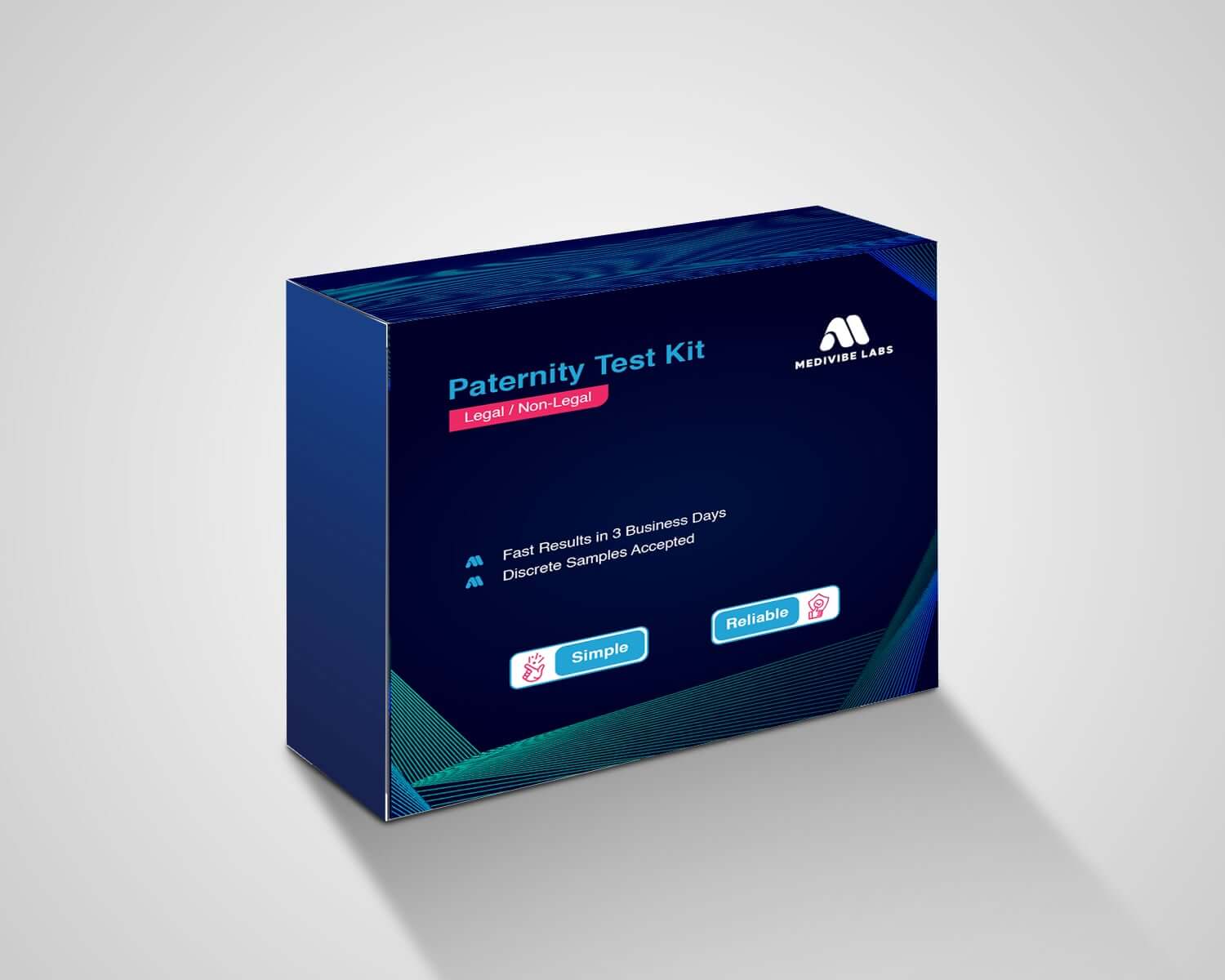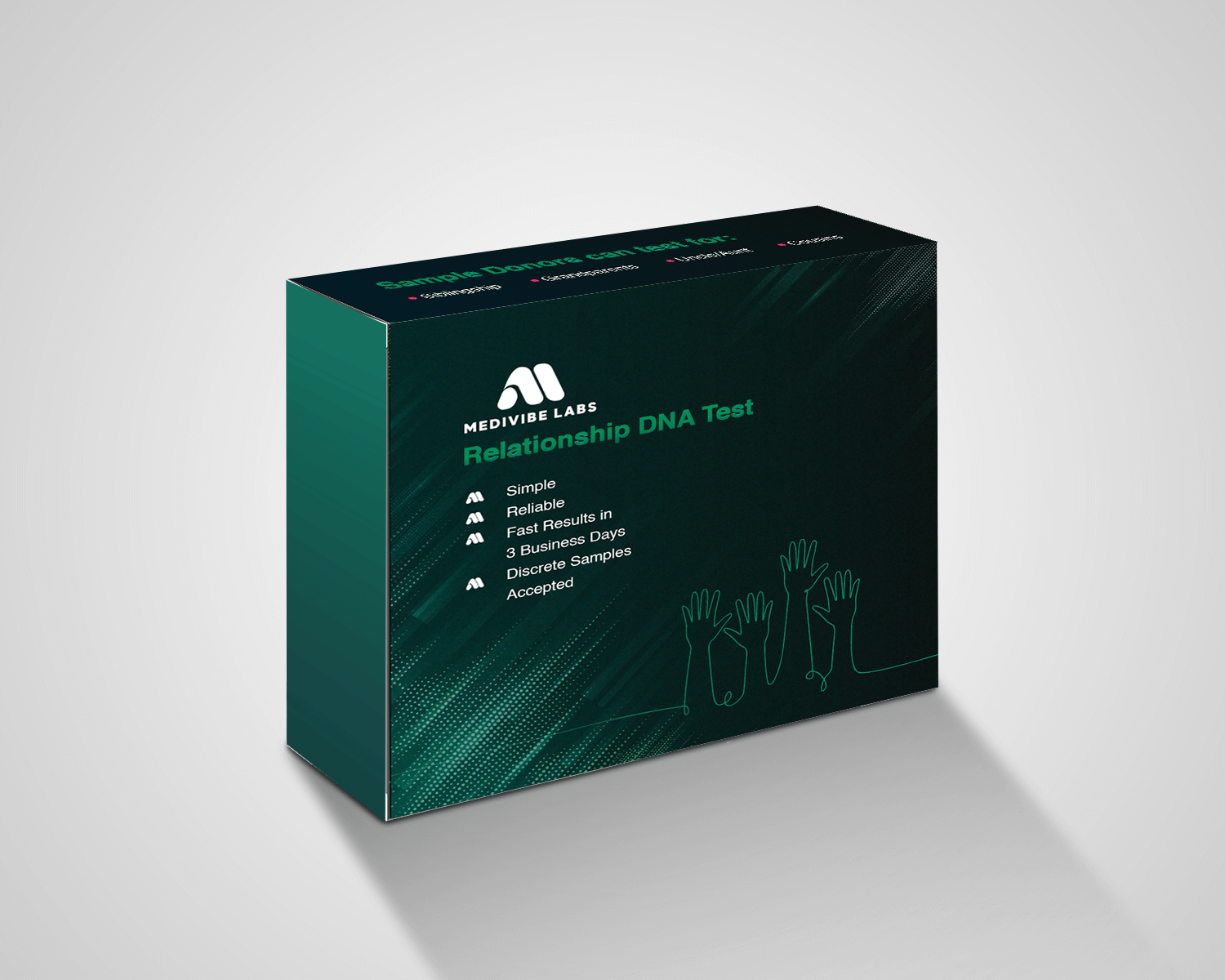Description
Types of Paternity Tests
- Legal Paternity Test
- Purpose: Used for legal proceedings, such as child support, custody cases, or inheritance disputes.
- Chain of Custody: Samples must be collected and handled according to strict protocols to ensure the integrity of the evidence.
- Documentation: Typically requires a witness (often a medical professional) to verify the identity of the individuals involved and the proper collection of samples.
- Results: Often delivered in a formal report that can be submitted to court.
- Informational Paternity Test
- Purpose: Provides information about paternity but is not admissible in court.
- Sample Collection: Can often be done at home using a simple kit (usually saliva or cheek swabs).
- Privacy: Generally less formal; results are typically sent directly to the individual without a witness.
- Cost: Usually less expensive than legal tests.
Sample Collection
- Types of Samples: Commonly collected samples include saliva, cheek swabs, or blood samples. Cheek swabs are the most common for non-invasive testing.
- Testing Process: The samples are sent to a laboratory where DNA is extracted and analyzed. The results usually take a few days to weeks.
Results Interpretation
- Probability of Paternity: Results are typically expressed as a probability percentage. A result of 99.9% or higher is generally considered conclusive.
- Non-Paternity: A lower percentage indicates that the man is not the biological father.
Considerations
- Emotional Factors: Paternity testing can carry significant emotional weight for all parties involved, so it’s important to consider the implications before proceeding.
- Legal Advice: If a legal test is needed, consulting with a legal professional is advisable to understand rights and obligations.
Both legal and informational paternity tests serve important purposes, but they differ significantly in terms of process, usage, and implications. Understanding these differences can help individuals make informed decisions based on their specific needs.
Process of a Paternity Test
- Choose the Type of Test
- Decide between a legal or informational paternity test based on your needs.
- Select a Testing Facility
- For a legal test, choose an accredited laboratory that follows strict legal guidelines.
- For an informational test, you can often order a kit online or from a local provider.
- Sample Collection
- Legal Test:
- Schedule an appointment at a certified facility.
- A trained professional will collect samples (typically cheek swabs) from the child and the alleged father.
- Identity verification is conducted, and a chain of custody is established.
- Informational Test:
- If using a kit, follow the included instructions.
- Usually involves swabbing the inside of the cheek for DNA samples.
- Submit Samples
- For legal tests, samples are sent directly to the lab by the collection facility to maintain chain of custody.
- For informational tests, you’ll return the samples to the lab as instructed in the kit.
- Laboratory Analysis
- The lab extracts DNA from the samples and analyzes specific markers to determine genetic relationships.
- This process typically takes a few days to a couple of weeks.
- Receive Results
- Legal Test: Results are provided in a formal report suitable for court use.
- Informational Test: Results are usually sent directly to you via email or mail.
- Interpret Results
- Results indicate the probability of paternity. A result of 99.9% or higher typically confirms biological relationships, while lower percentages suggest non-paternity.
- Follow-Up
- If needed, consult with a legal professional to understand the implications of the results, especially if they affect legal matters like custody or child support.
Considerations
- Emotional Preparedness: Be ready for the potential emotional impact of the results.
- Privacy: Legal tests are conducted with strict confidentiality, while informational tests offer a more personal experience.
- Cost: Legal tests are usually more expensive due to the formal processes involved.
This step-by-step process ensures that you receive accurate and reliable results, whether for personal knowledge or legal purposes.
Frequently asked questions
- What is a paternity test?
A paternity test determines whether a man is the biological father of a child by comparing DNA samples.
- What types of paternity tests are available?
There are two main types:
Legal Paternity Test: Used in legal matters, requiring strict protocols and documentation.
Informational Paternity Test: For personal knowledge, not admissible in court, and typically easier to obtain.
- How are samples collected?
Samples can be collected through:
Cheek swabs: A non-invasive method using a cotton swab on the inside of the cheek.
Blood samples: Less common for paternity testing.
Home test kits: For informational tests, where you can collect samples at home.
- How long does it take to get results?
Results usually take a few days to two weeks, depending on the lab and type of test.
- How accurate are paternity tests?
Most tests provide a probability of paternity. A result of 99.9% or higher is considered conclusive, while lower percentages indicate a lack of biological relation.
- Can paternity tests be done before birth?
Yes, prenatal paternity testing is possible through procedures like amniocentesis or chorionic villus sampling (CVS), but these methods carry risks and should be discussed with a healthcare provider.
- Will insurance cover paternity testing?
Coverage varies by policy and provider. It’s best to check with your insurance company regarding coverage for paternity tests.
- What if the alleged father refuses to take the test?
If a legal test is necessary, a court order can compel the individual to participate. For informational tests, participation is voluntary.
- Is there any legal impact of a paternity test?
Yes, legal tests can influence child support, custody, and inheritance rights. Results from informational tests are not legally binding.
- How is privacy protected?
Legal paternity tests maintain confidentiality through secure processes and documentation, while informational tests offer less formal privacy protections.
- What is the cost of a paternity test?
Legal Paternity Test: Typically ranges from $300 to $600, depending on the lab and location.
Informational Paternity Test: Generally less expensive, ranging from $100 to $300.
- Can paternity tests be conducted with relatives?
Yes, if the alleged father is unavailable, testing can be done with other relatives (e.g., siblings, grandparents) to establish a biological connection, though this may be less definitive.
- What happens if the test shows that the alleged father is not the biological father?
The results can have significant implications, including the potential need to re-evaluate custody arrangements, child support obligations, or inheritance issues.
- Are there any legal ramifications for taking a paternity test?
While the act of taking a test itself doesn’t have legal consequences, the results may impact legal decisions regarding child support, custody, and other family law matters.
- What if the results are inconclusive?
Inconclusive results can occur due to insufficient DNA samples or contamination. In such cases, retesting may be necessary.
- How is the chain of custody maintained?
For legal tests, strict protocols are followed during sample collection and handling. A designated professional witnesses the process to ensure that the samples can be used in court.
- Can a child’s mother participate in the test?
While not required, having the child’s mother provide a sample can enhance the accuracy of the test by allowing for comparison of genetic markers.
- Is there a risk of false positives or negatives?
Accurate paternity tests have a very low risk of false results. However, issues like sample contamination or human error can lead to inconclusive findings rather than false positives or negatives.
- Are home test kits reliable?
Informational test kits can be reliable but are not as rigorously controlled as legal tests. The accuracy depends on proper sample collection and handling.
- What should I do if I disagree with the test results?
If you believe there has been an error, consult with the testing lab to discuss your concerns. You may consider retesting or seeking legal advice if the results impact legal matters.
- How are the results communicated?
Results are typically provided in written format, either via email or postal mail. Legal test results are accompanied by documentation suitable for court.
- Can I request a re-test?
Yes, if you have concerns about the initial test results, you can request a retest. This is common practice in cases of inconclusive results or if there’s a belief of error.
- What are the emotional impacts of a paternity test?
Paternity testing can evoke a range of emotions. It’s important to consider potential outcomes and seek support if needed, whether from friends, family, or counseling services.
- Can a paternity test determine other familial relationships?
Yes, DNA testing can be used to establish other relationships, such as grandparentage, sibling relationships, or even more distant familial connections.
- What if the alleged father is deceased?
Testing can still be done using DNA samples from the deceased father (if available, such as from a blood sample or other biological materials) or through testing relatives to determine biological connections.
- Are there age restrictions for testing?
No specific age restrictions exist for paternity testing. Infants can be tested shortly after birth, and there is no upper age limit for those being tested.
- What are the potential outcomes of a paternity test?
Positive Result: Indicates a biological relationship, often expressed as a probability (e.g., 99.9%).
Negative Result: Suggests no biological relationship.
Inconclusive Result: May require retesting or further investigation.
- What if I want to keep the test results confidential?
For legal tests, results are typically confidential, and labs have protocols to protect your privacy. For informational tests, check the lab’s privacy policy before ordering.
- Do I need a lawyer for a paternity test?
While not required, consulting a lawyer may be beneficial if the results will be used for legal purposes, such as custody or child support, to understand your rights and obligations.
- Can the mother contest the results?
Yes, if the mother disagrees with the results, she can seek legal recourse. It may involve additional testing or evidence presentation in court.
- Are there any health risks associated with paternity testing?
Non-invasive tests, such as cheek swabs, have no health risks. Prenatal tests (like amniocentesis) carry some risks and should be discussed with a healthcare provider.
- How often are paternity tests updated or improved?
DNA testing technology continually advances, leading to more accurate and efficient testing methods. Labs often update their protocols and technology in response to these developments.
- What should I do if the alleged father lives far away?
Samples can often be collected at a local facility near the alleged father, or home testing kits can be used if a legal test is not necessary.
- Can results be used to establish custody or visitation rights?
Yes, if the test is legally admissible, results can significantly impact custody and visitation decisions in family law.
- What if the alleged father is not available for testing?
If the alleged father is unavailable, testing can be done with other relatives to establish a potential biological relationship.
- Can a paternity test be performed with just one parent?
Yes, paternity can be established using only the child’s and alleged father’s DNA. However, including the mother can enhance accuracy by providing more genetic context.
- What happens to the samples after testing?
Most labs store samples for a limited time in case retesting is needed, but policies vary by lab. You can inquire about sample retention during the testing process.
- How does a paternity test affect family dynamics?
The results can significantly impact family relationships and dynamics, especially if they reveal unexpected biological connections or lack thereof. Open communication and support are crucial.
- Are there emotional support resources available?
Many organizations and support groups focus on family law and paternity issues. Seeking professional counseling can also help process the emotional aspects of paternity testing.
- What if I suspect that the sample was tampered with?
If you have concerns about sample integrity or tampering, discuss this with the testing lab. They can investigate and determine if a retest is warranted.
- Can a paternity test be conducted anonymously?
Informational tests can be more private, but legal tests require identification for chain of custody. If anonymity is crucial, consider using an informational test.
- Is there a minimum number of genetic markers required for testing?
Most labs analyze a minimum of 15 to 20 genetic markers to ensure accurate results, though this may vary depending on the lab’s protocols.
- Can I use results from an informational test in court?
No, results from informational tests are not admissible in court. Legal tests must adhere to strict procedures to be considered valid evidence.
- What should I consider before taking a paternity test?
Think about the emotional and legal implications, the potential impact on relationships, and your readiness to accept the outcomes.
- Can testing determine if there are any genetic disorders?
While standard paternity tests focus on establishing relationships, specialized genetic tests can identify specific hereditary conditions. Consult with a healthcare provider for options.
- How do I choose a testing facility?
Look for accredited laboratories with positive reviews and transparent practices. Check for certifications from organizations like the AABB (American Association of Blood Banks).
- What if I change my mind after initiating the test?
You can typically withdraw from the process, but policies may vary by lab. Contact the testing facility to discuss your options.
- Can pets be tested for paternity?
While DNA testing for pets can determine breed or parentage, it operates under different standards than human paternity tests. Consult a veterinary service for options.
- What if the alleged father lives in another country?
International testing can be complex, but many labs offer services for cross-border testing. Ensure the lab follows appropriate legal protocols.
- How can I prepare for a paternity test?
Educate yourself on the testing process, discuss it with involved parties, and consider the potential outcomes. Emotional preparedness is essential.




Reviews
There are no reviews yet.